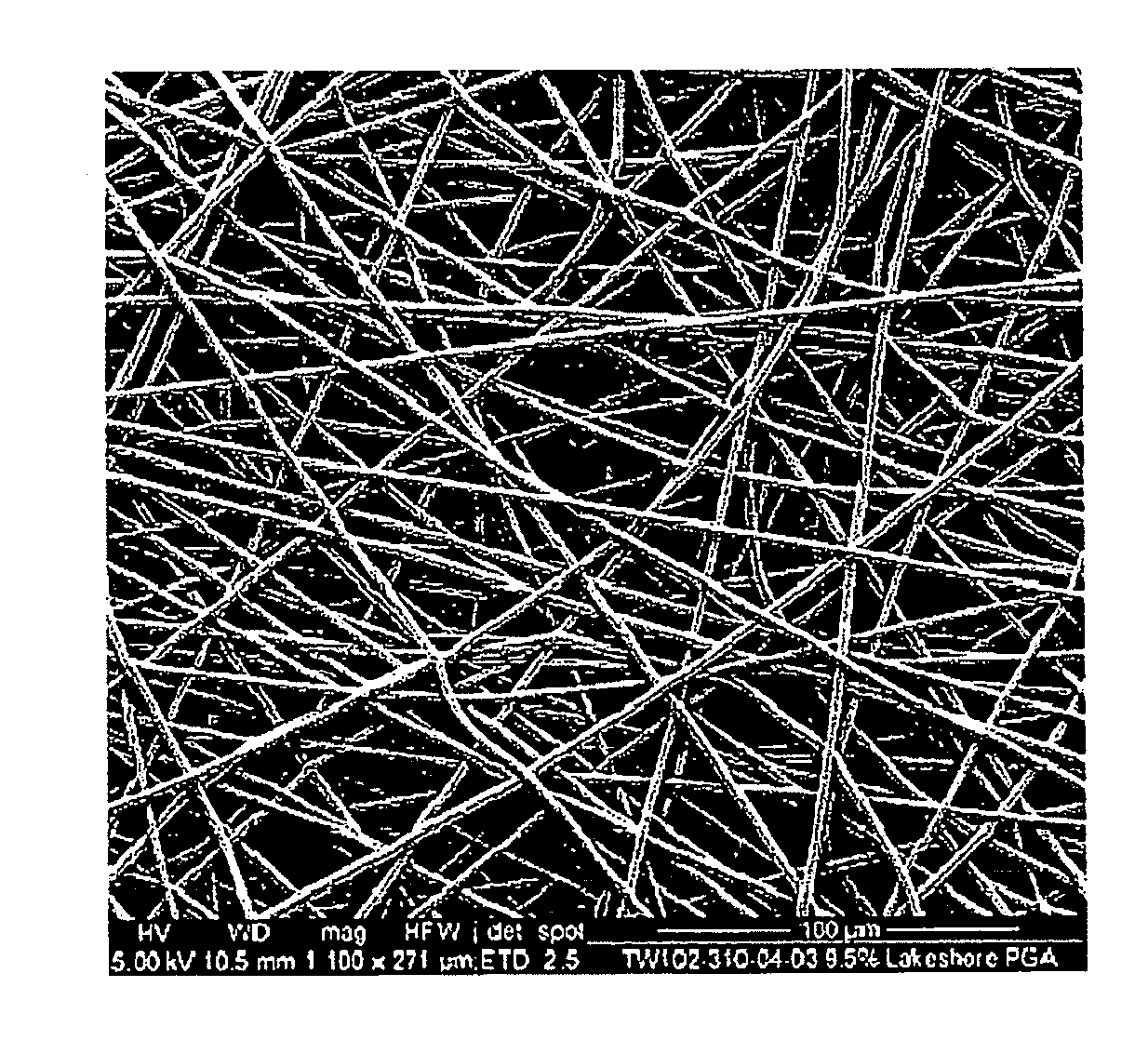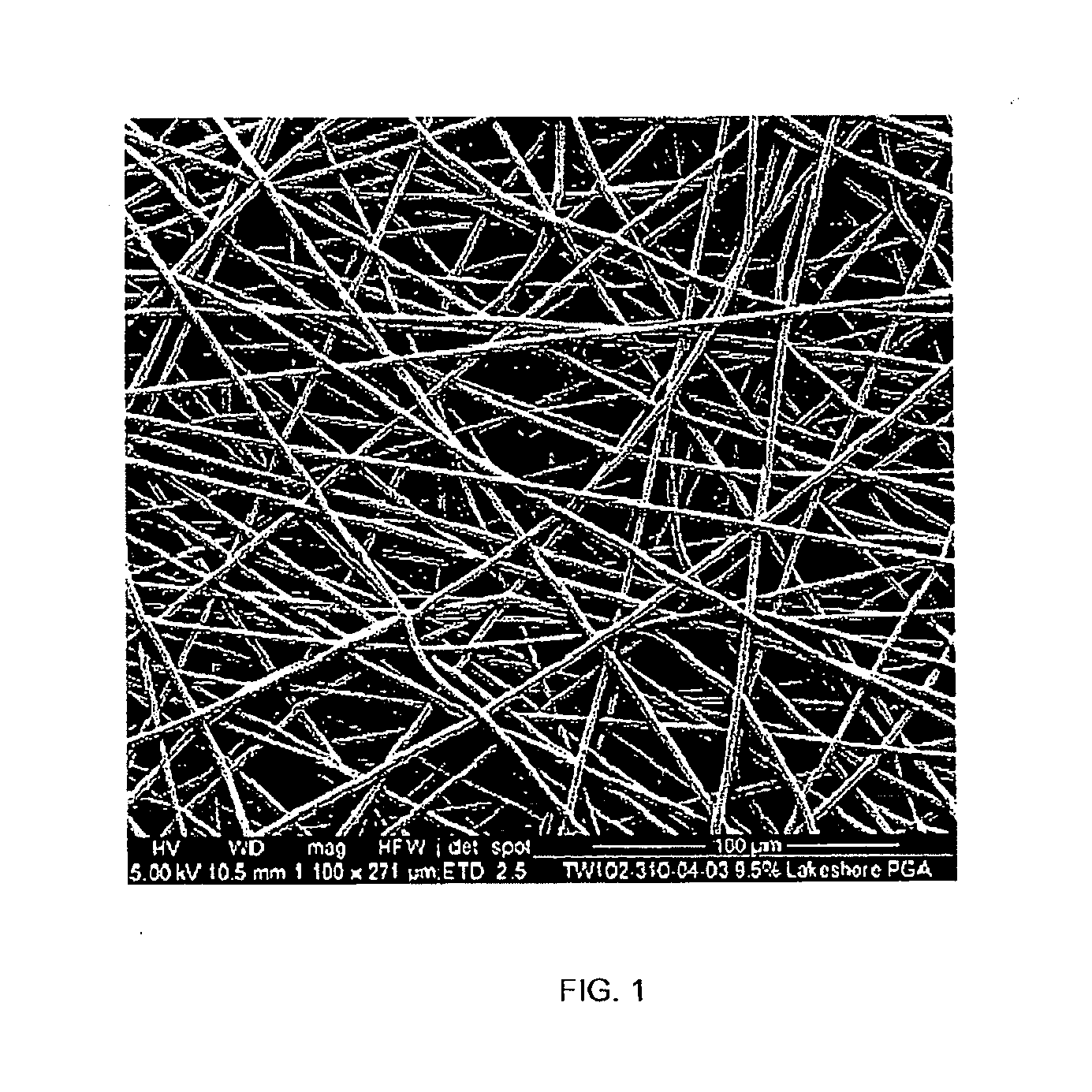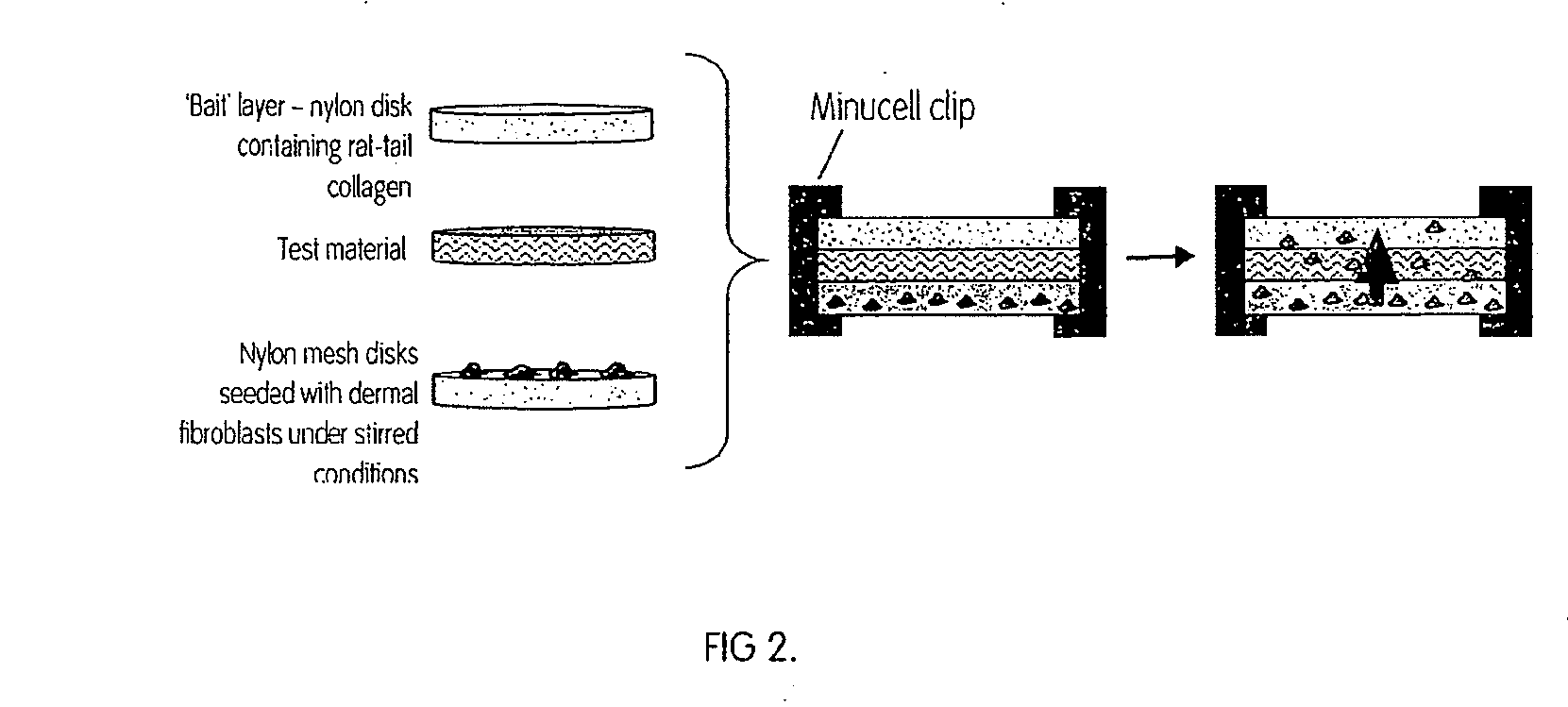Scaffold
a technology of scaffolds and spherical plates, applied in general culture methods, blood/immune system cells, biocide, etc., can solve the problems of poor handling, less control of biodegradability, and use of natural polymers
- Summary
- Abstract
- Description
- Claims
- Application Information
AI Technical Summary
Benefits of technology
Problems solved by technology
Method used
Image
Examples
example 1
Method of Manufacturing an Electrospun Scaffold for Use in the Cell Capturing Device
[0120]Electrospun scaffolds were produced by the process of electrospinning using polyglycolide (PGA), poly(lactide-co-glycolide) (PLGA), polyglycolide trimethyl carbonate (PGA-co-TMC), polycaprolactone (PCL), poly(D-lactide) (PDLA) and poly(L-lactide) (PLLA). The polymer solution was placed into a 10 ml syringe residing in a syringe pump, which was set to dispense the polymer at the required rate. The syringe tip was then attached to tube (1.5 mm internal diameter) with other end attached to an 18 gauge needle that had been horizontally cut to remove its taper. The needle was clamped vertically between 10 and 20 cm above a target within a box (internal dimensions: 55 cm wide×60 high×60 deep) used to minimise air movement while electrospinning. The target consisted of a metal roller; know as the mandrel, which was attached to a motor that was rotated up to 2000 rpm to give an even coating of nano-fib...
example 2
Isolation of Bone Marrow Cell Suspension
[0122]Trabecular bone was removed from two femoral heads from freshly culled pigs obtained from the abattoir on the day of sampling. The femur was detached from the knee and all the muscle, cartilage, tendons and any other tissue that could contaminate the marrow sample were removed. The femoral head was dissected using a coping saw to expose the trabecular bone, which was removed with a borer under sterile conditions.
example 3
Cell Suspension Dilution and Optimum Concentration
[0123]The cells isolated from bone marrow from the femoral head were initially a solid fraction, which would not pass through the meshes, so the cells were diluted into to a fluid fraction. The bone marrow was diluted down in either phosphate buffer saline (PBS), plasma or fresh porcine blood to a concentration of 1×107 white blood cells (WBC) / ml. A 100 μl aliquot of the cell suspension was removed for counting on the Coulter counter (Beckman Coulter Ac.T 5 diff. Counter). The Beckman Coulter counter counted the number of categories of both white and red blood cells contained within the sample based on both size and granularity, enabling measurements to be taken of the initial and final cell concentrations of the various cells, thus allowing the percentage of mononuclear cells captured on the scaffold to be calculated.
PUM
| Property | Measurement | Unit |
|---|---|---|
| Fraction | aaaaa | aaaaa |
| Fraction | aaaaa | aaaaa |
| Fraction | aaaaa | aaaaa |
Abstract
Description
Claims
Application Information
 Login to View More
Login to View More - R&D
- Intellectual Property
- Life Sciences
- Materials
- Tech Scout
- Unparalleled Data Quality
- Higher Quality Content
- 60% Fewer Hallucinations
Browse by: Latest US Patents, China's latest patents, Technical Efficacy Thesaurus, Application Domain, Technology Topic, Popular Technical Reports.
© 2025 PatSnap. All rights reserved.Legal|Privacy policy|Modern Slavery Act Transparency Statement|Sitemap|About US| Contact US: help@patsnap.com



